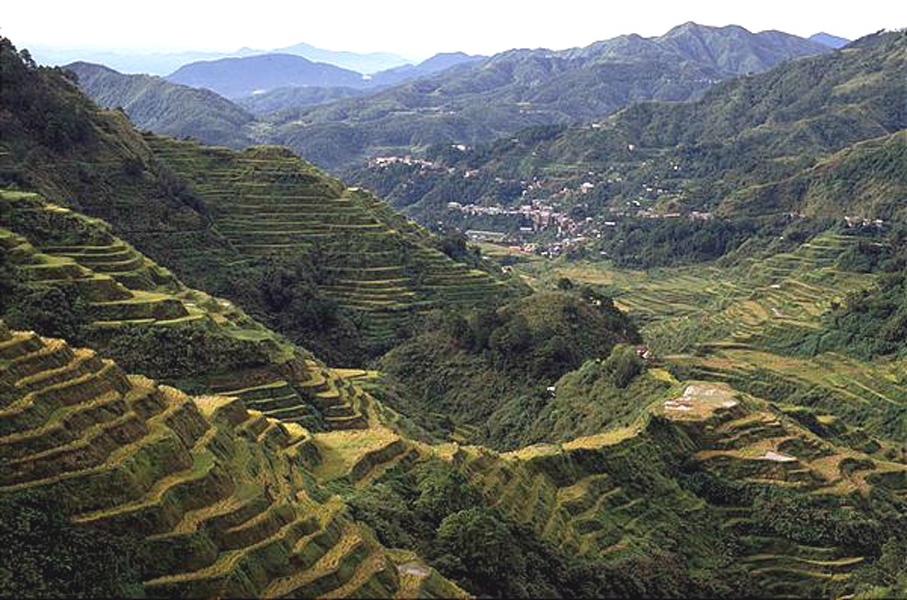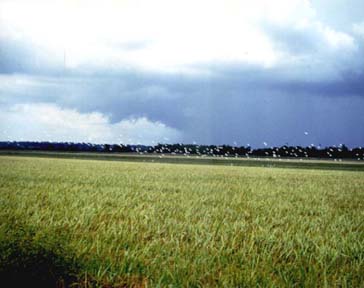Research Interests
Ronald L. Sass
My research at Rice started in the Chemistry Department doing
X-ray diffraction and crystal structures, mainly of organic molecules. During
the years, I have found it productive to switch research interests about every
decade as evidenced by my list of publications. I moved from crystal structures
to image laser analysis, muscle physiology, and invertebrate calcification. By
far my most exciting and productive times in research have been during the most
recent thirteen years when I have concentrated on problems of climate change and
biogeochemistry. During these years I have developed a world recognized reputation
for my research on greenhouse gas emissions from rice fields and natural wetlands,
have been able to travel the world because of my research, have introduced new
courses on global systems to students, and have had great graduate students working
with me. Although I feel I have worked the equivalent of two or three jobs, I
am about as happy as possible in my work and would not trade it for anything.

I became interested in biogeochemistry in 1987 and, after a stint as Chair of
Biology, I took a sabbatical year working with NASA during 1988. After studying
tracegas emissions to the atmosphere from natural wetland ecosystems in Alaska
and Virginia I returned to Rice to set up a laboratory to do the same work in
agricultural wetlands, rice fields. I felt that rice fields would be a great
model system in which to learn the processes involved for all wetland systems.
Our group’s first paper, "Methane Production and Emission in a Texas
Agricultural Wetland" plus my work in Alaska resulted in an invitation
to participate in the SCOPE/IGBP Workshop on "Trace Gas Exchange in a Global
Perspective", held in1990 in Sigtuna, Sweden. A major result of this meeting
was the organization of the global activity on "Rice Cultivation and Trace
Gas Exchange (RICE)." I acted as reporter for the organizational recommendations
coming from the workshop. These were subsequently adopted by the IGBP and eventually
I became Convener for the coordinating committee created for the activity.
This committee included most of the leading atmospheric scientists around the
world who were interested in studying this subject and being convener of the
committee gave me the unique opportunity to shape the direction of research
in this area and to be an integral part of conducting the research. Four research
groups soon established themselves as the leaders in rice field methane research;
the International Rice Research Institute in the Philippines under Uli Neue,
the Japanese National Institute for Agro-Environmental Sciences under Katsu
Manami who eventually became Director General of the Institute, the Max-Planck
Institute für Chemie in Mainz, Germany under Wolfgang Seiler and Ralf Conrad,
and our laboratory at Rice University.
Working in close cooperation with these other laboratories over the past dozen
or so years, our small research group at Rice has established itself in the
international science community as one of the very best and most productive
laboratories in process level and mitigation studies of trace-gas emissions
to the atmosphere from rice agroecosystems. Through our work, we have determined
the major driving factors in the bacterial production of methane and its emission
to the atmosphere. We have also determined how the emission of methane from
rice fields can be controlled and have recommended agricultural practices that
will reduce this emission essentially to zero.
 A
significant advance in the understanding of methane emissions from wetlands
was made through our development and application of a semi-empirical process
level model that not only is able to explain and integrate all of the data collected
in Texas, but has been successful in simulating emissions from other parts of
the world, including China.
A
significant advance in the understanding of methane emissions from wetlands
was made through our development and application of a semi-empirical process
level model that not only is able to explain and integrate all of the data collected
in Texas, but has been successful in simulating emissions from other parts of
the world, including China.
In 2000 we conducted a study to determine the effect of spatial variability
within a single rice field on methane emissions observed using static flux boxes.
The importance of this study is that it can be applied to establish error limits
on country emission inventories that are based on local field measurements.
Twenty-four experimental plots were employed to measure daily and seasonal methane
emission, seasonal above ground biomass, and soil texture. A statistical analysis
of the data provided predictive information on the precision with which static
flux box measurements can determine the actual methane emission value in a particular
field. The results of this study are related to the general global question
of spatial variability in rice fields by comparisons with experimental and calculated
methane emissions from several comparably managed rice fields around the world
This research was originally supported by a developmental grant of $25,000 from
Rice University. Since 1990 it has been continuously been funded by several
governmental and private granting agencies, including the Department of Energy,
the Department of Agriculture, NASA, the multi-agency Terrestrial Ecology Consortium
(TECO), Reliant Energy, and the David and Eula Wintermann Foundation.
In addition to field and laboratory research, I have worked closely with the
IPCC developing "Guidelines on National Greenhouse Gas Inventories for
Methane Emissions in Rice Cultivation" and methodology for countries to
report their emission inventories through the construction of "Good Practices
in National Inventories". My work with the IPCC on country level inventories
has resulted in my being invited by various countries to help them in their
measurements and reporting process. These countries include the United States,
Brazil, Thailand, and China.
I now feel that the scientific work on methane emissions from rice fields is
rapidly reaching completion. We have answered all of the questions that were
set forth in 1990 by the RICE activity of the IGBP and have indeed gone beyond
them into presenting a scientific basis for country greenhouse gas policy issues.
